
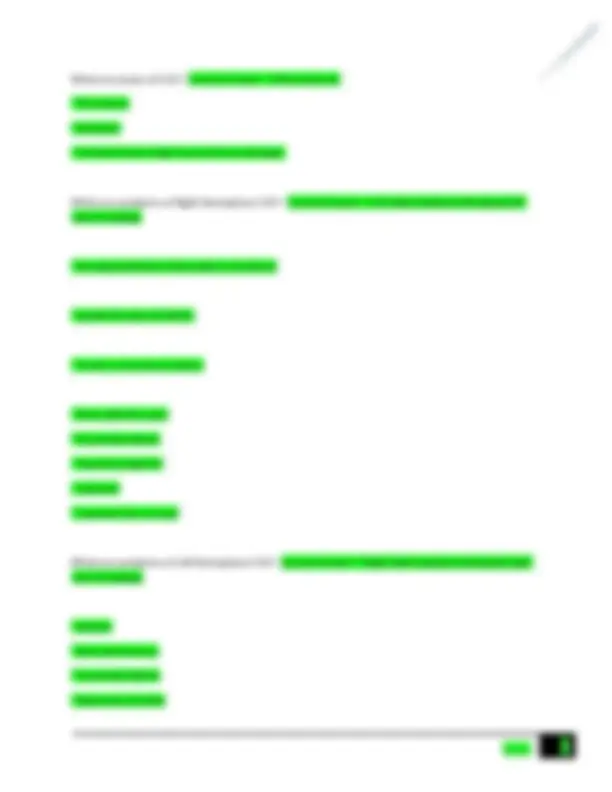
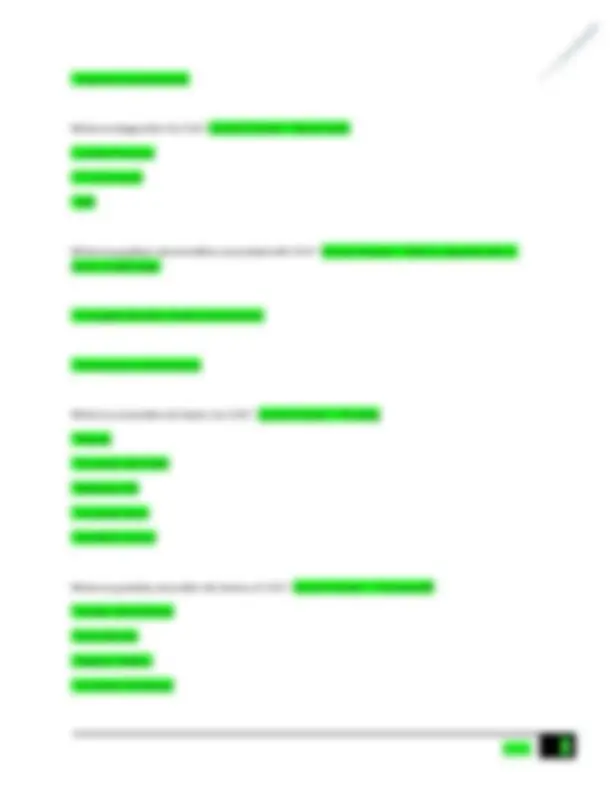
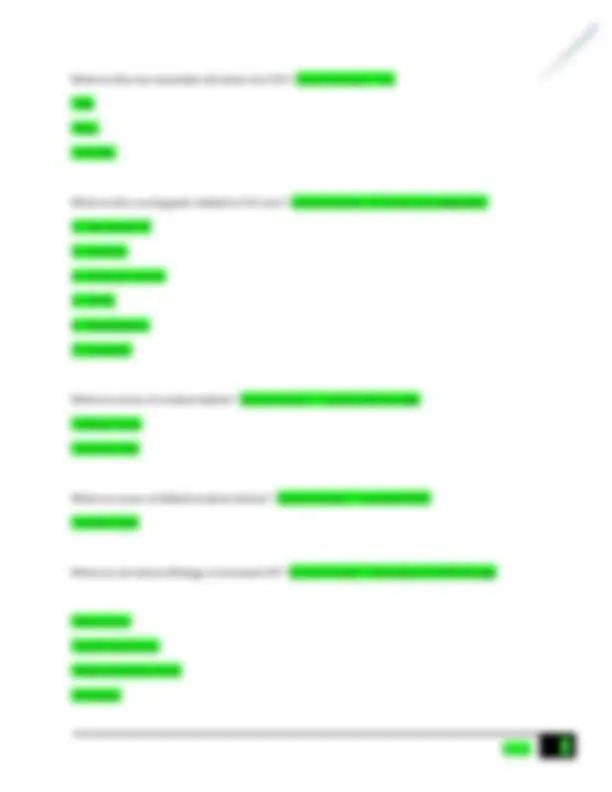
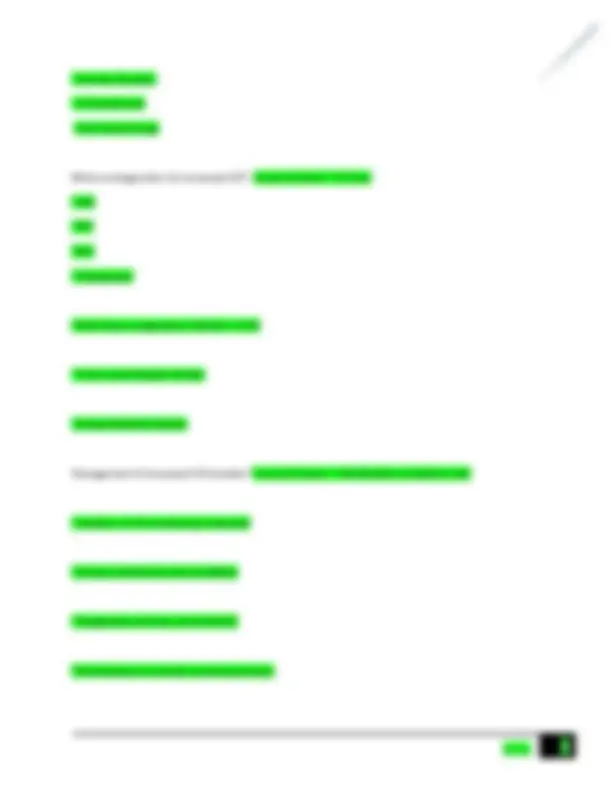
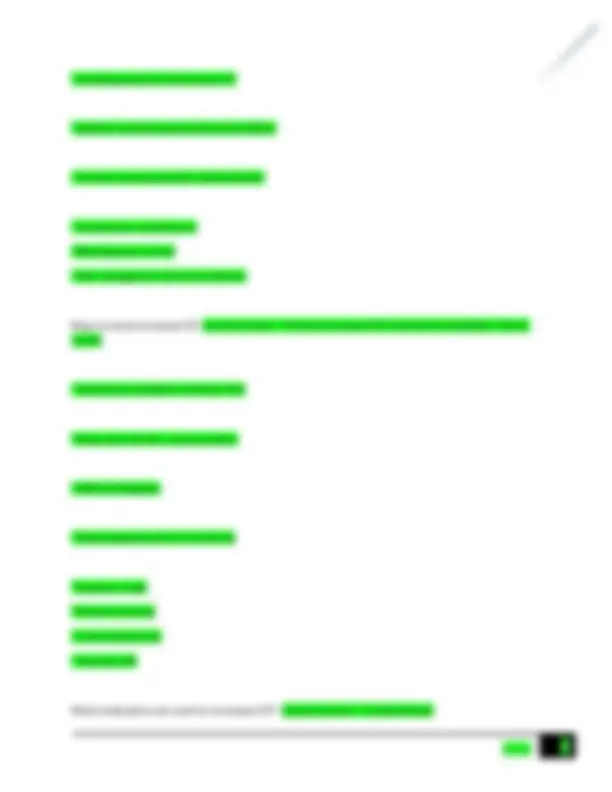
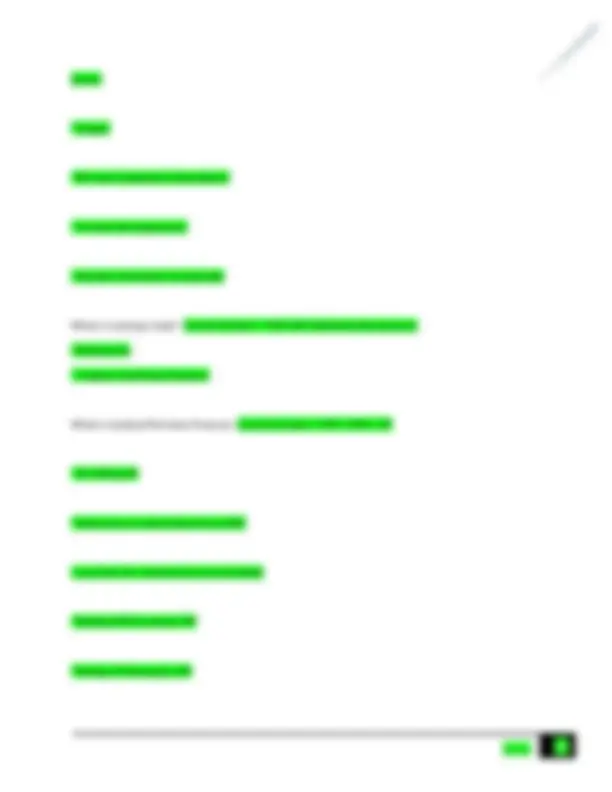
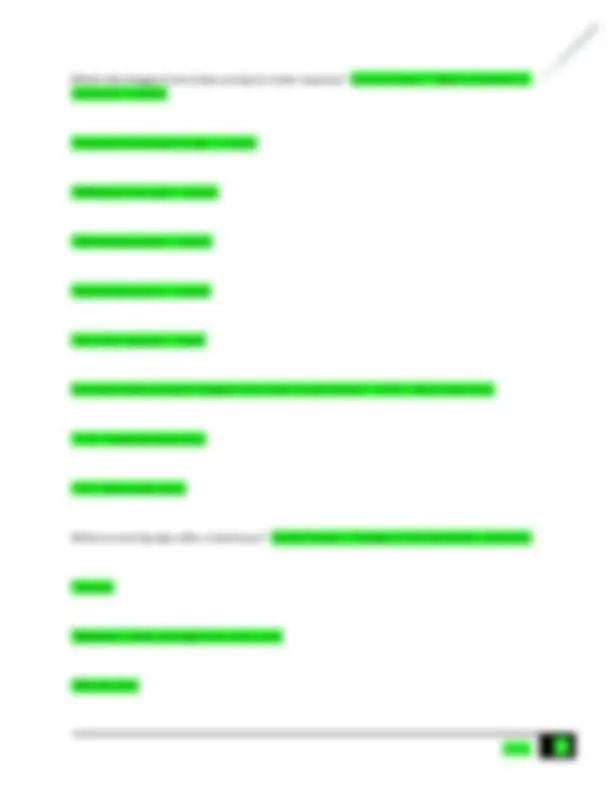

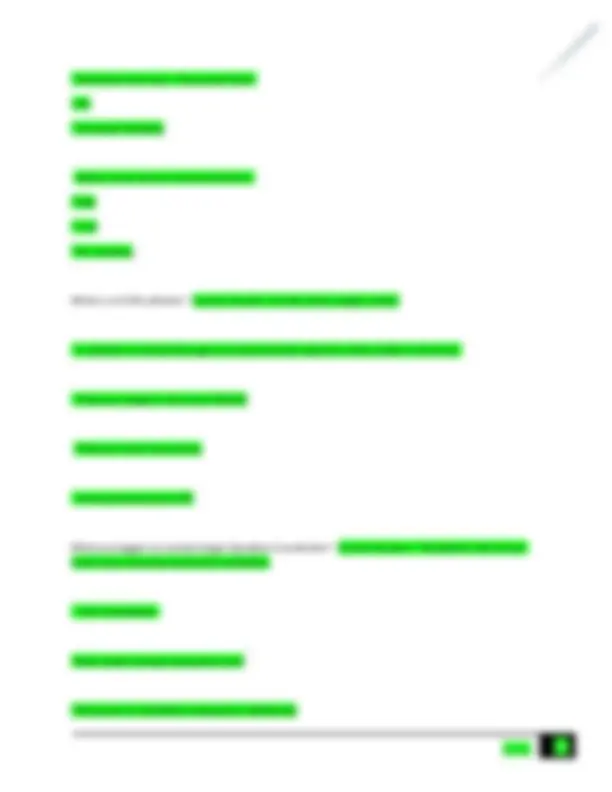

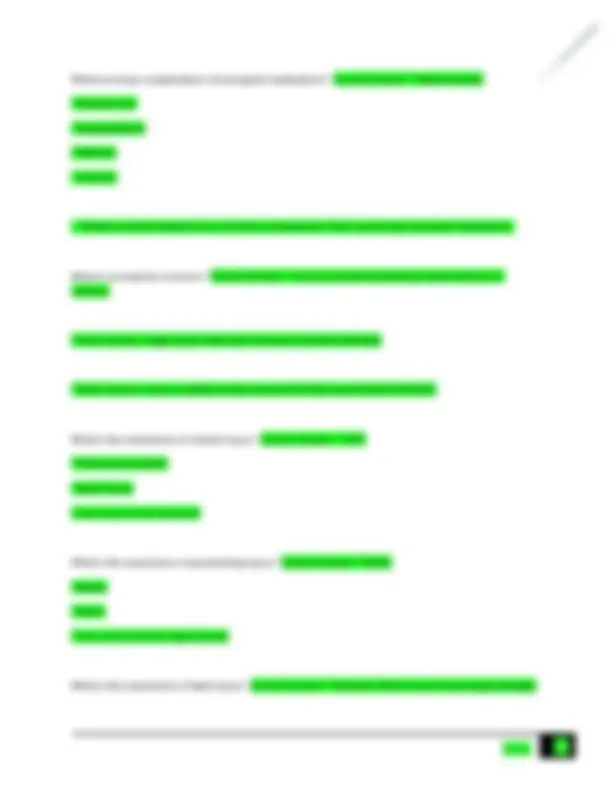

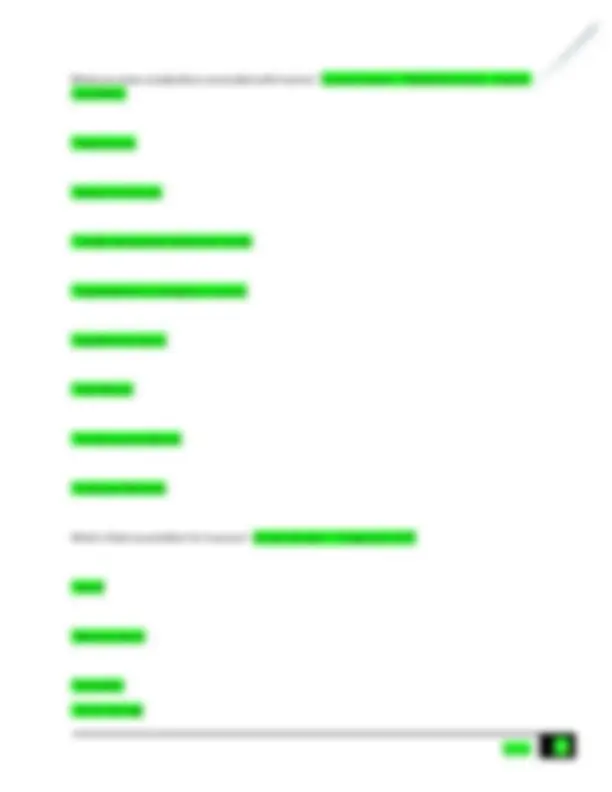
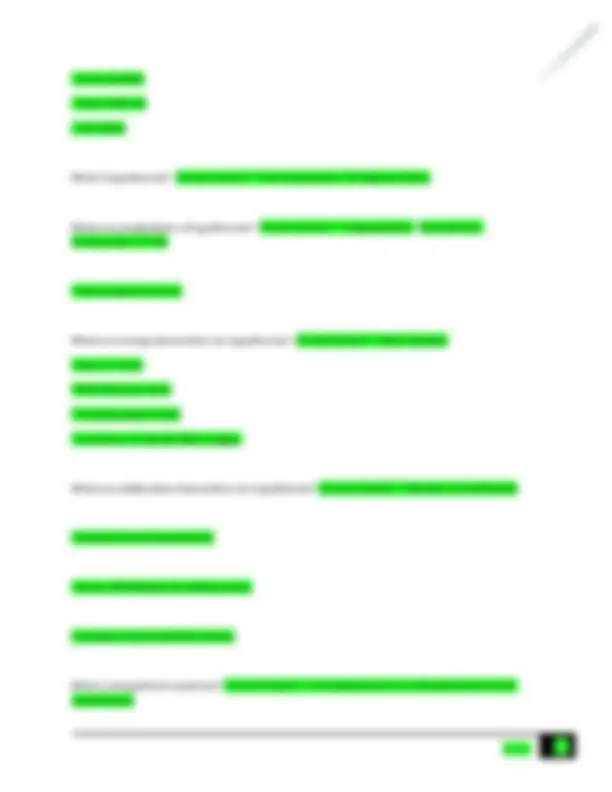
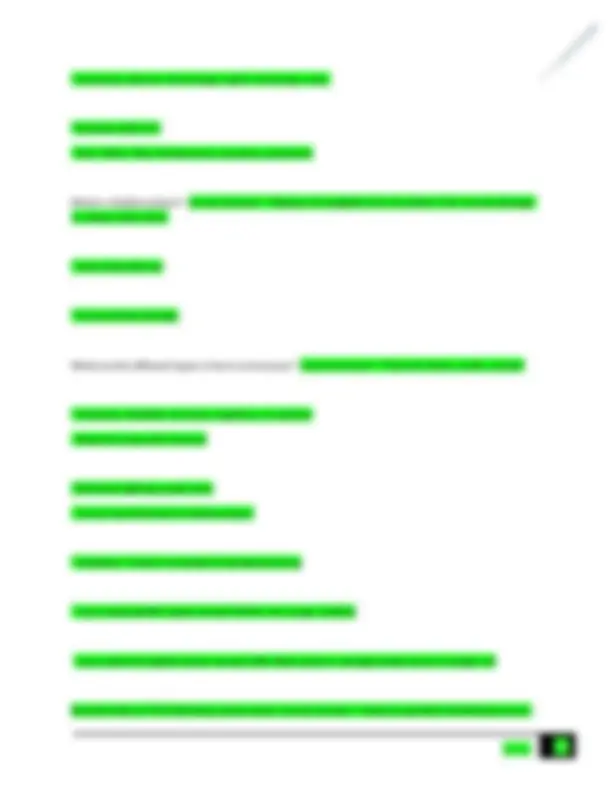
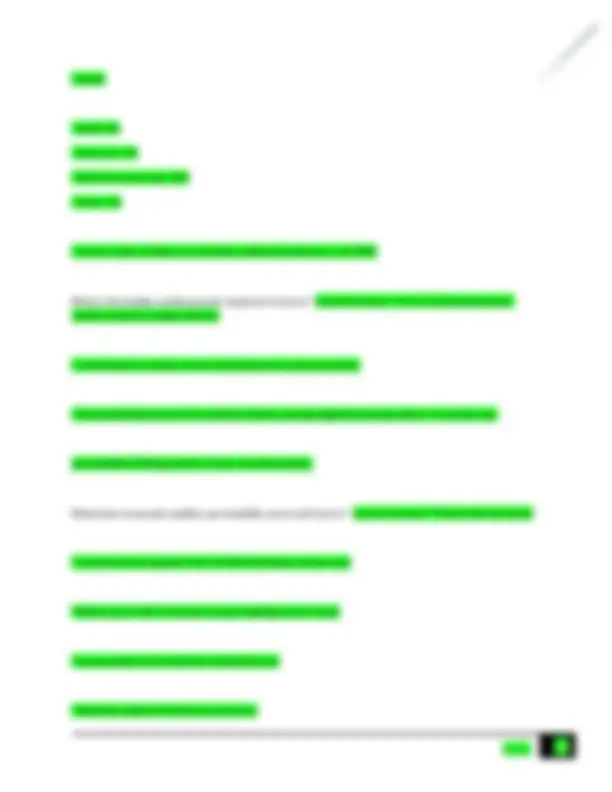
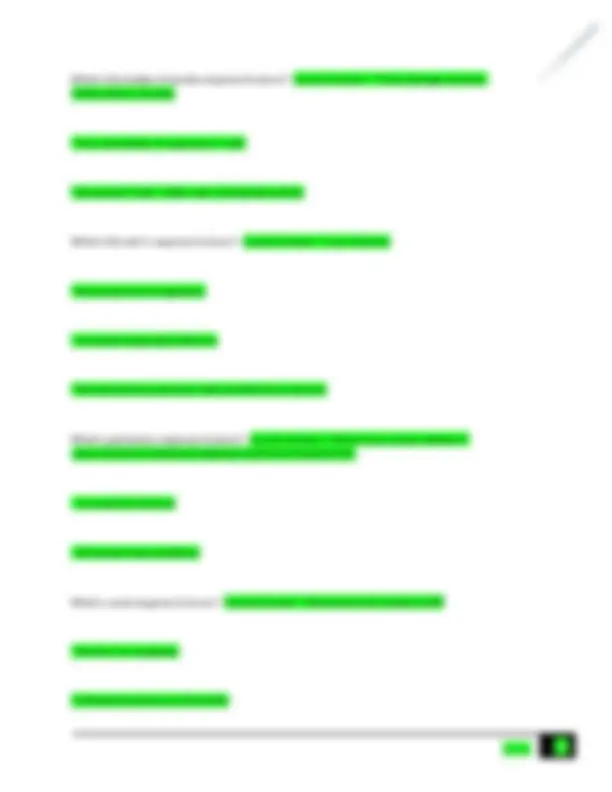
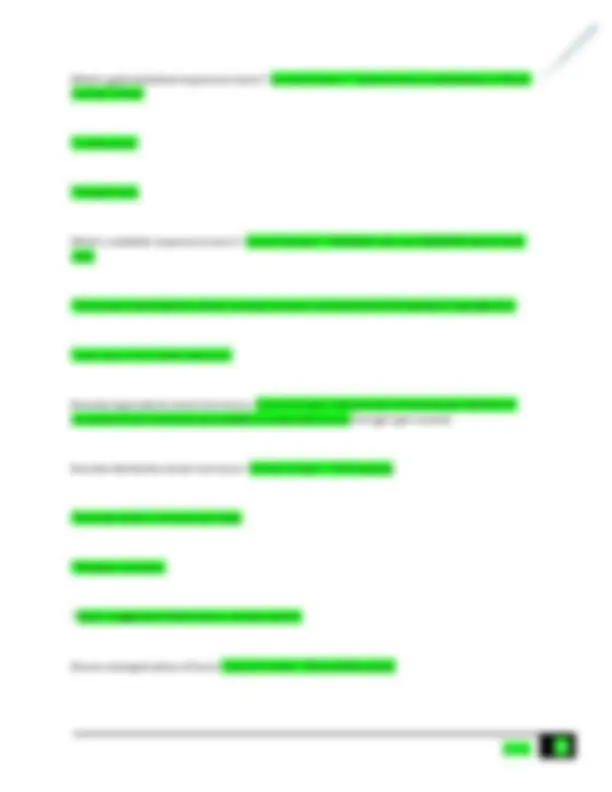

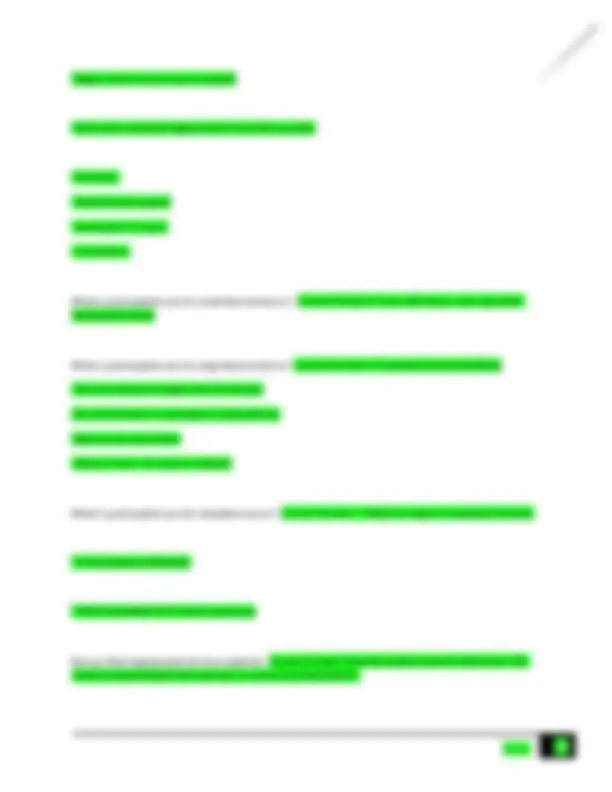
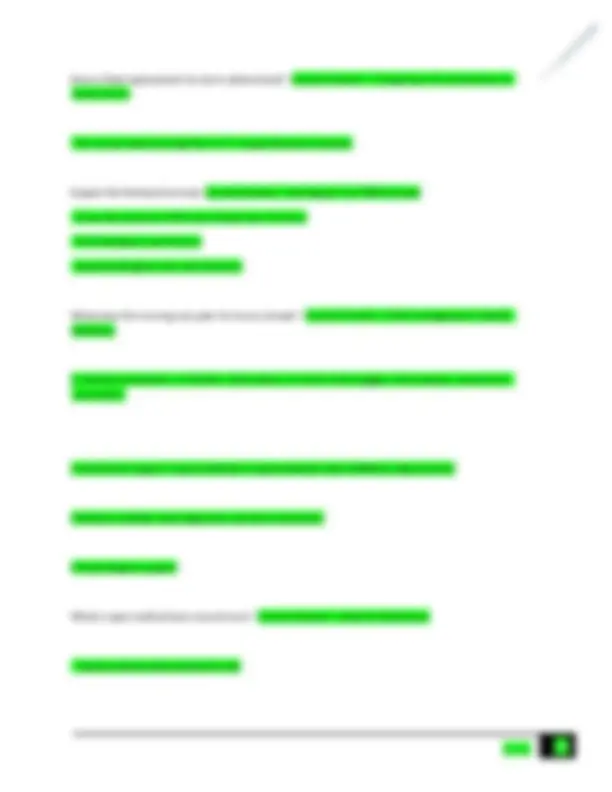
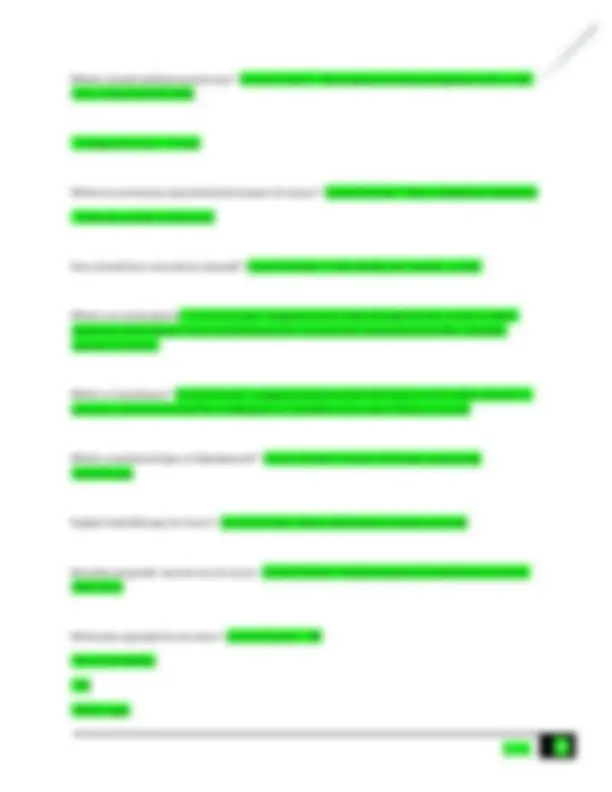
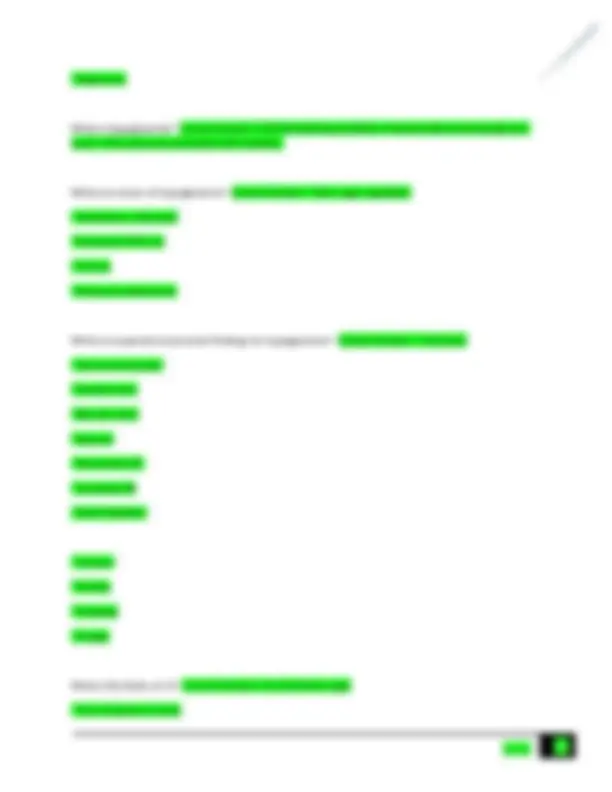
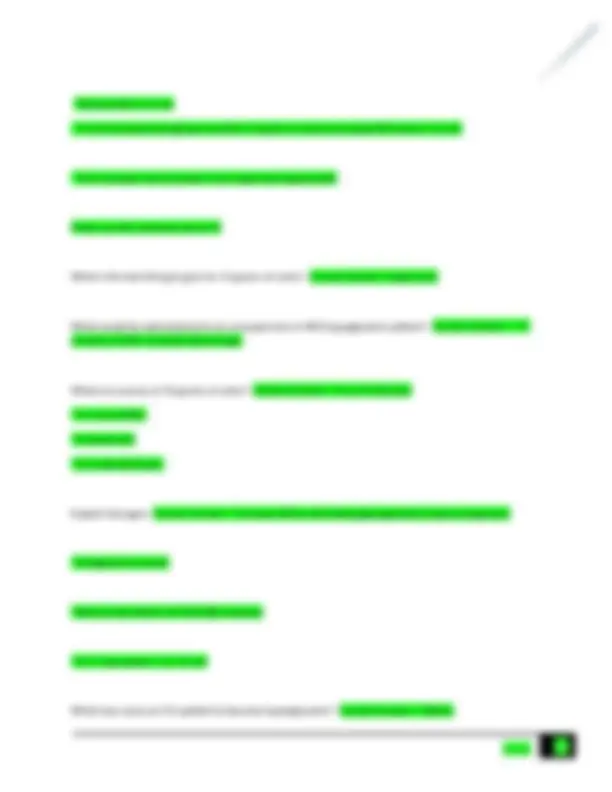
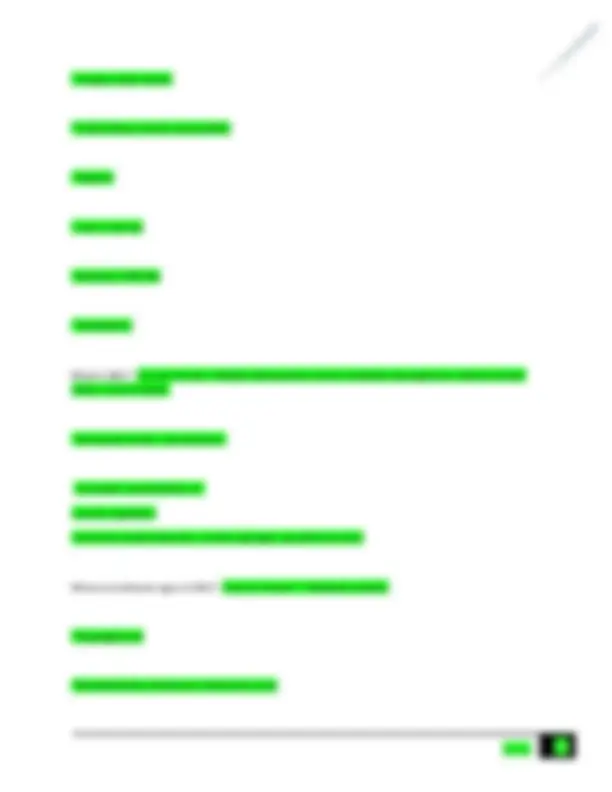
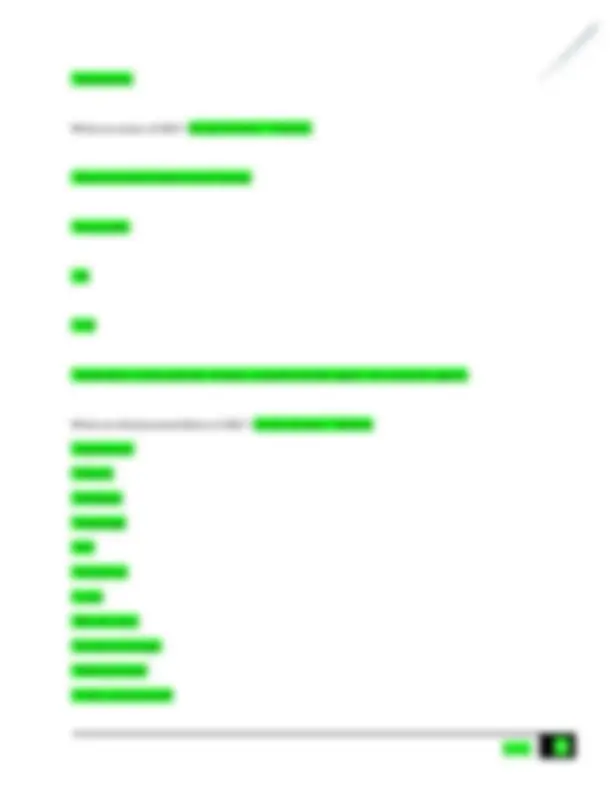
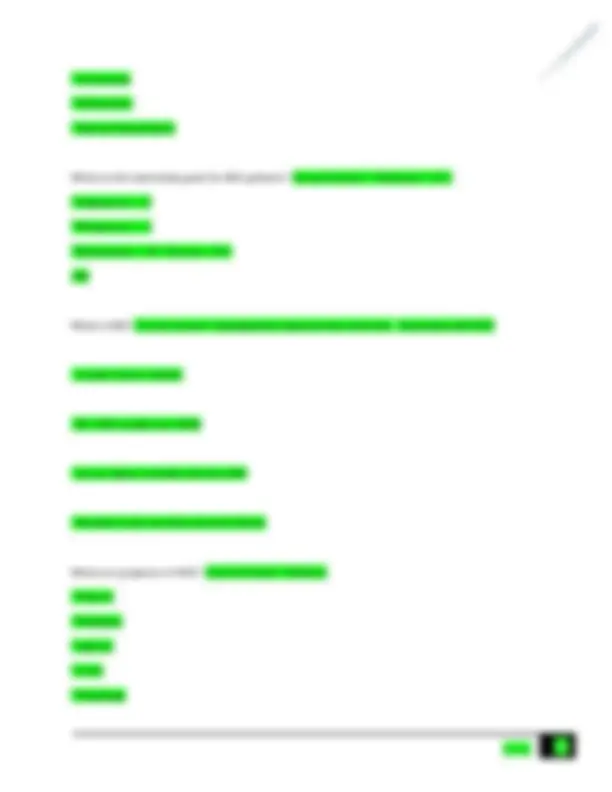

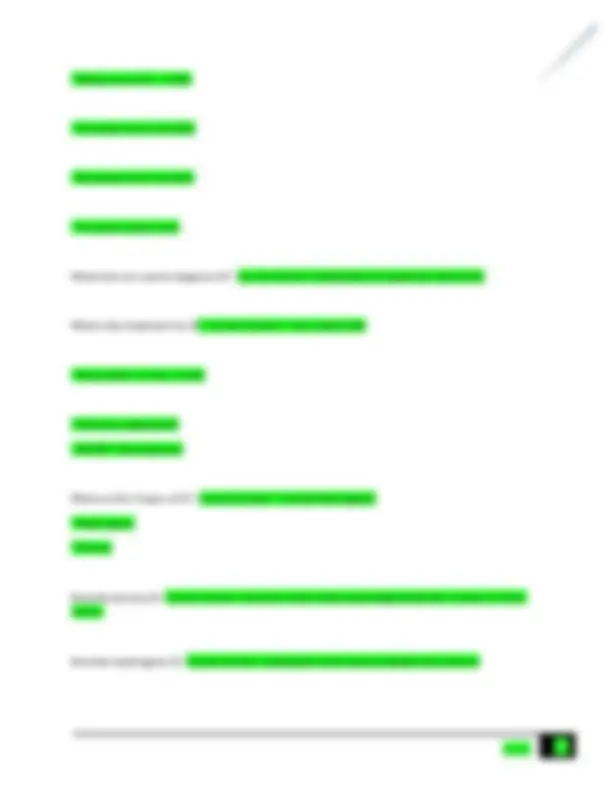
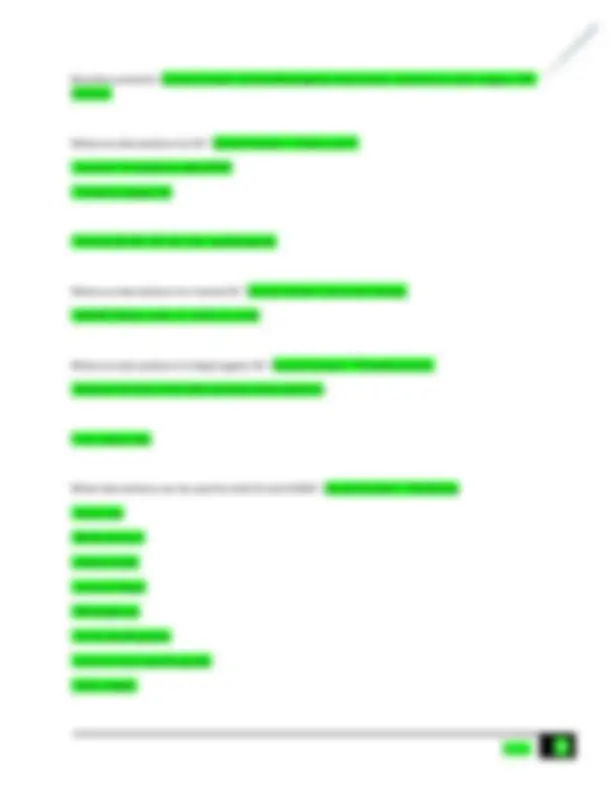
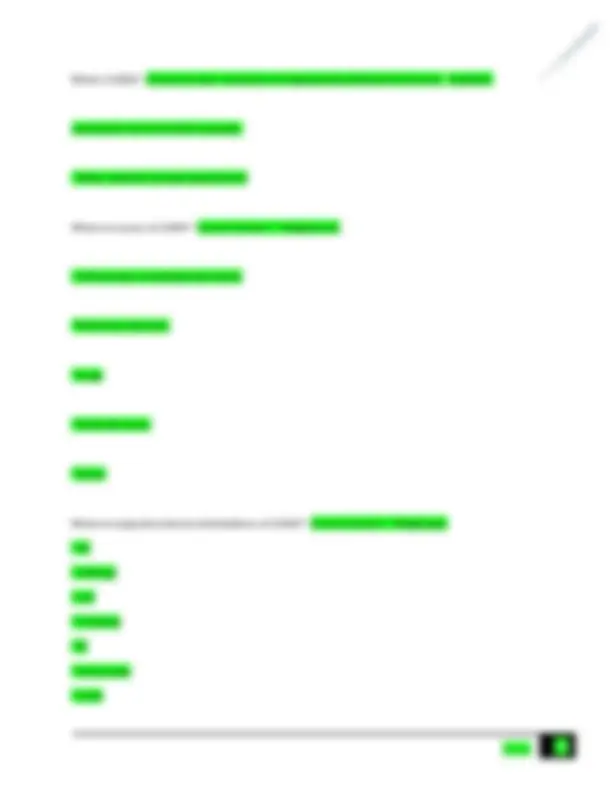

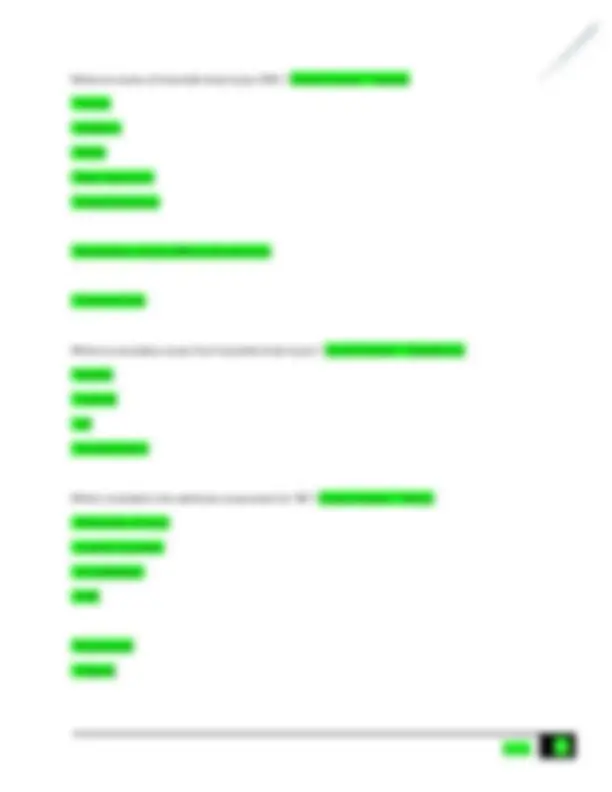
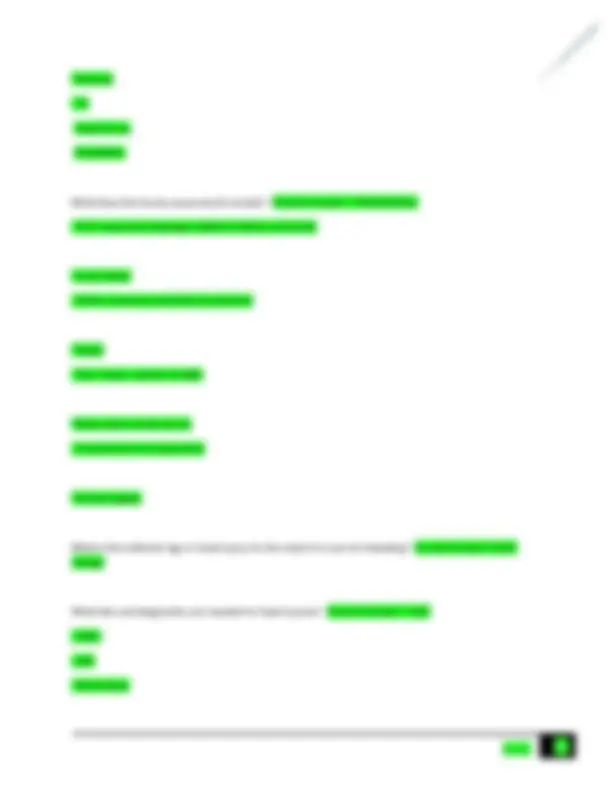
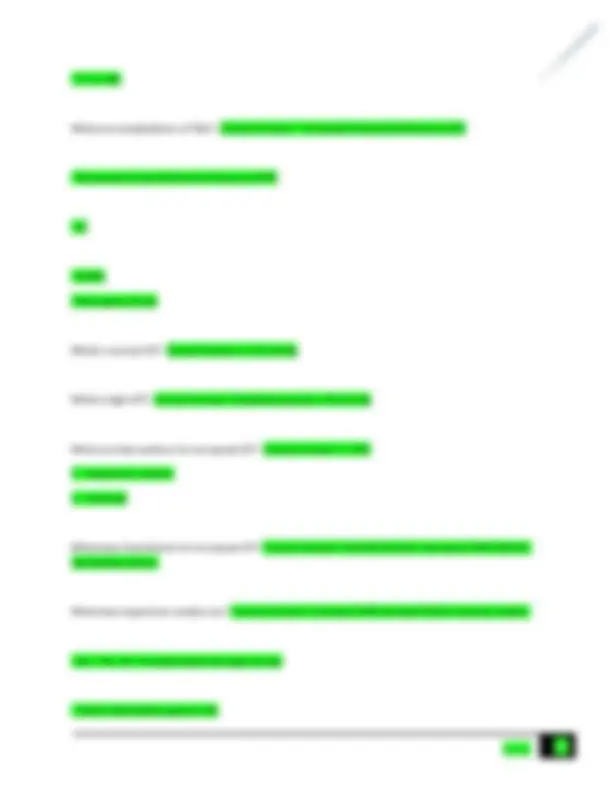
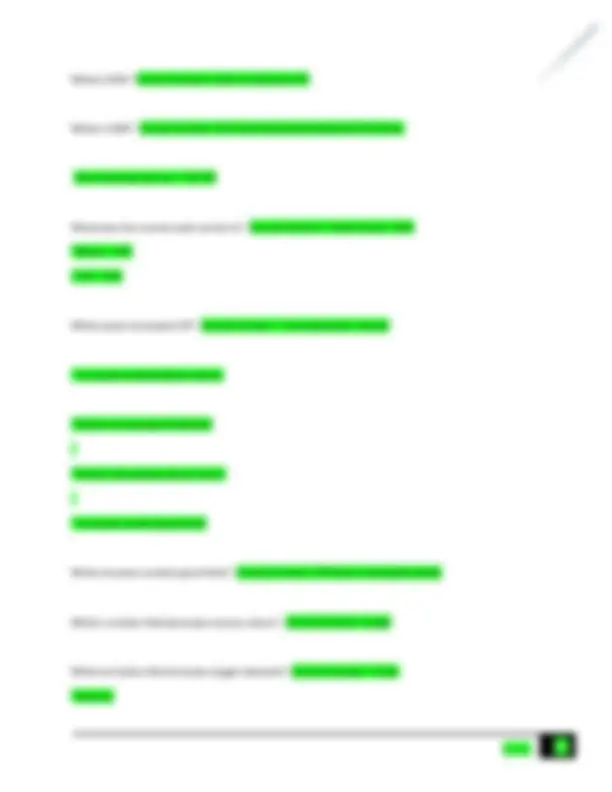
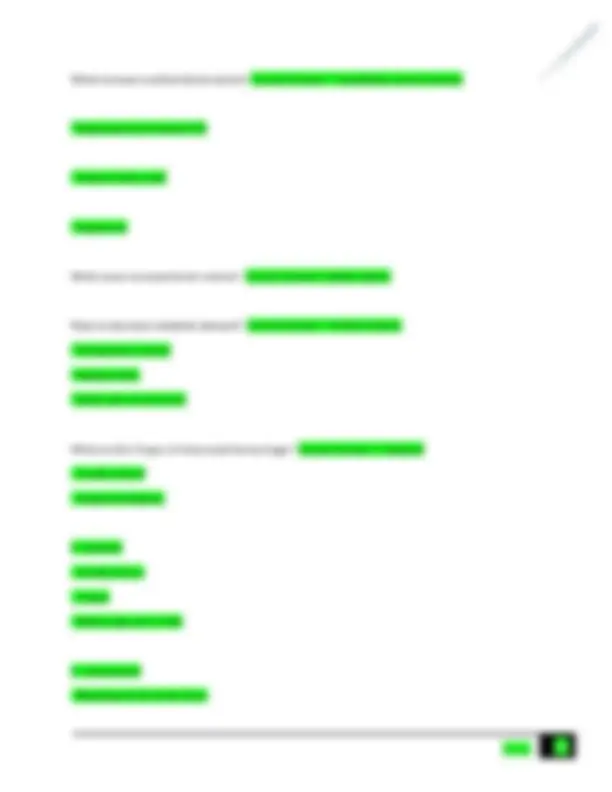
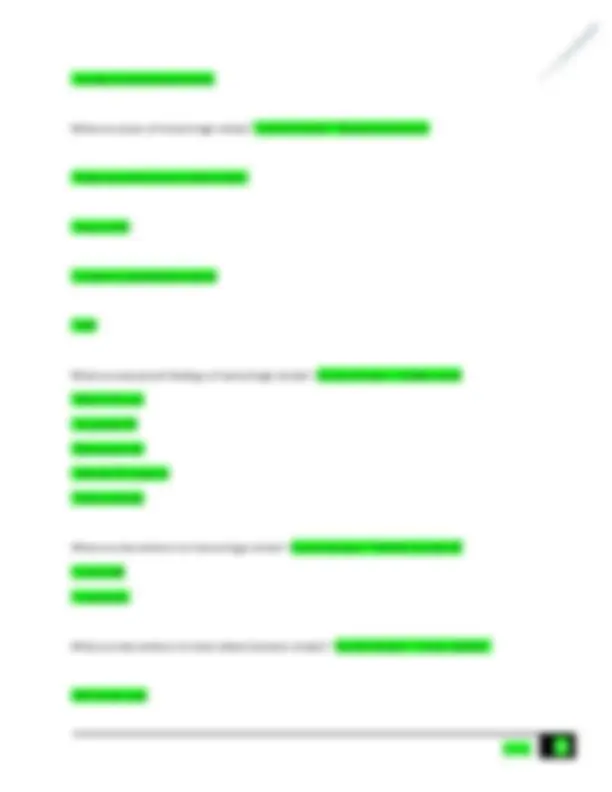

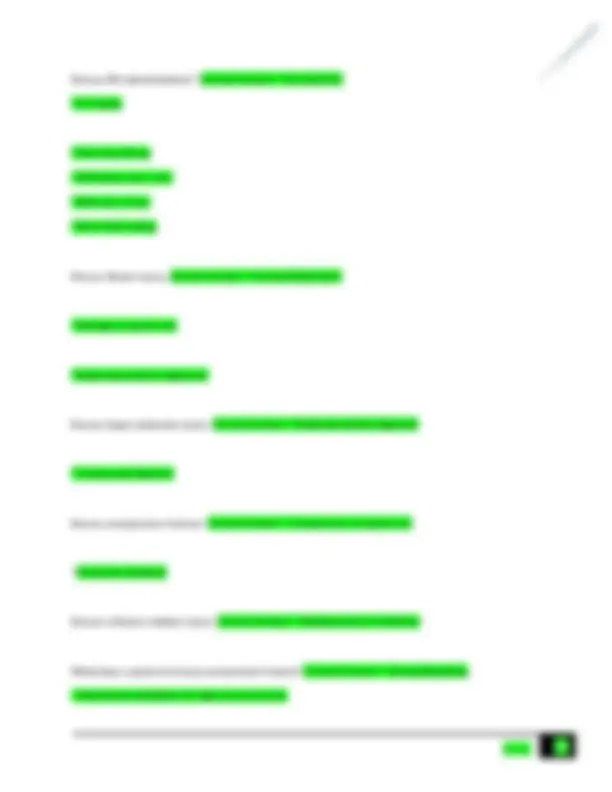
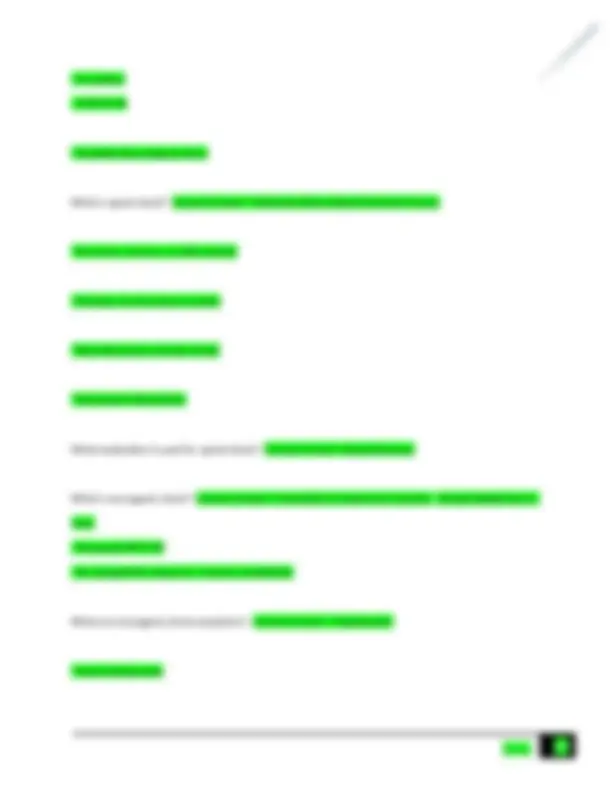
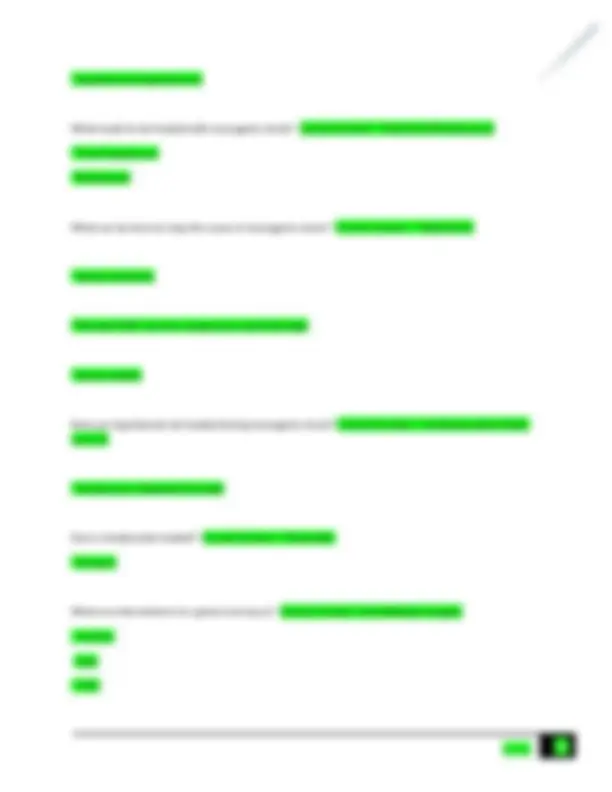
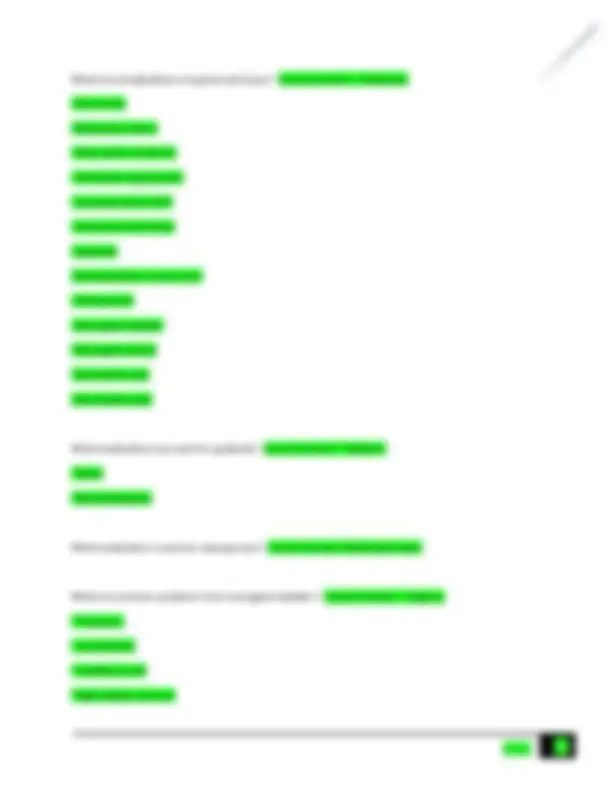
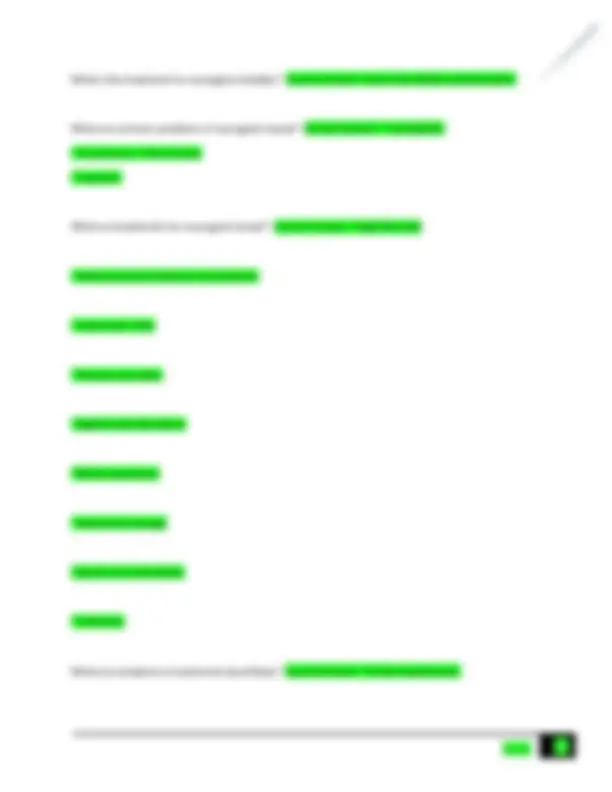

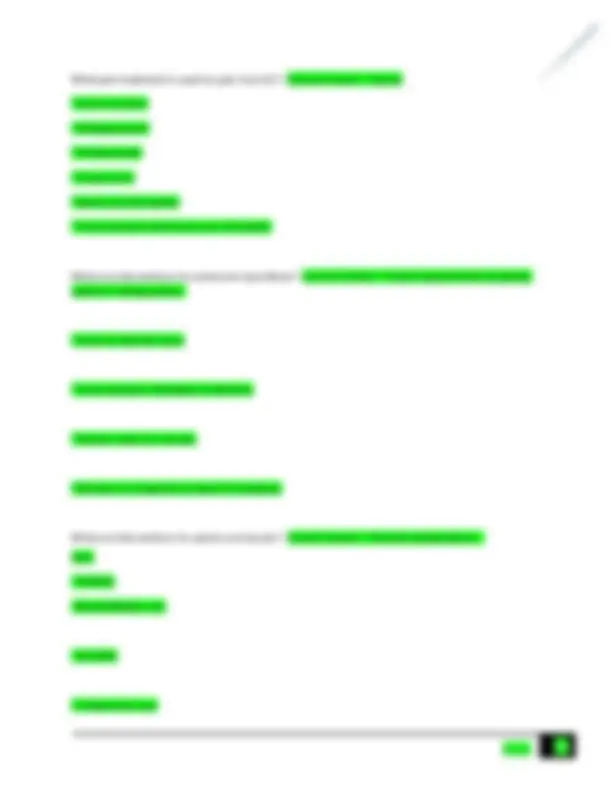
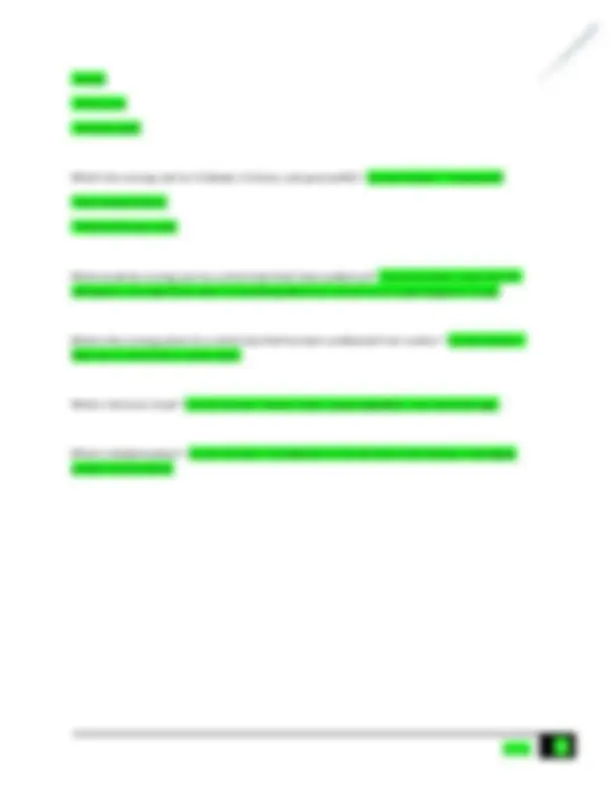


Study with the several resources on Docsity

Earn points by helping other students or get them with a premium plan


Prepare for your exams
Study with the several resources on Docsity

Earn points to download
Earn points by helping other students or get them with a premium plan
Community
Ask the community for help and clear up your study doubts
Discover the best universities in your country according to Docsity users
Free resources
Download our free guides on studying techniques, anxiety management strategies, and thesis advice from Docsity tutors
NR341 Complex Adult Health Care Study Guide Questions and Answers What are symptoms of a stroke, brain attack, and CVA? -Correct Answer= *Headache *Confusion *Seizures *Incontinence *Vomiting *Disorientation *Diplopia *Ptosis
Typology: Exams
1 / 55

This page cannot be seen from the preview
Don't miss anything!
















































What are symptoms of a stroke, brain attack, and CVA? -Correct Answer= *Headache *Confusion *Seizures *Incontinence *Vomiting *Disorientation *Diplopia *Ptosis *Hypertension *Apraxia *Decreased Neuromuscular control *Memory Impairment *Aphasia (L Hemisphere for CVA) *Decreased cough/Swallow Reflex *Agnosia (Decr. Sensory interpretation) *Hemiparesis/hemiplegia *Emotional Liability *Loss of corneal reflex *Homonymous *Hemianopsia *Spatial-Perceptual Defects What are symptoms of Transient Ischemic Attacks (TIA)? -Correct Answer= *Confusion *Vertigo *Dysarthria
*Transient Hemiparesis *Temporary Vision Changes *Typically lasts less than 1 hours What are Focal Neurological symptoms? -Correct Answer= *Paralysis *Sensory Loss *Language Disorder *Reflex Changes What are the 3 steps to stroke recognition? -Correct Answer= 1. Ask person to smile and stick out tongue
*Impaired comprehension What are diagnostics for CVA? -Correct Answer= *Neuro Exam *Lumbar Puncture *CT of the brain *MRI What are pupillary abnormalities associated with CVA? -Correct Answer= *Pupil on opposite side of lesion usually larger *Conjugate Deviation (looks toward lesion) *Homonymous Hemianopsia What are reversible risk factors for CVA? -Correct Answer= *Smoking *Obesity *Increased salt intake *Sedentary life *Increased stress *Oral Birth Control What are partially reversible risk factors of CVA? -Correct Answer= *Increased BP *Cardiac Valve Disease *Dysrhythmias *Diabetic Mellitus *Increased Cholesteral
What are the non-reversible risk factors for CVA? -Correct Answer= *Sex *Age *Race *Heredity What are the nursing goals related to CVA care? -Correct Answer= 1) Airway and oxygenation
*Maintain hydration *SZ precautions *Monitor I&O's *Avoid coughing, sneezing, and valsalva maneuver *Prevent Aspiration *Calm/Quite environment *Early mobility *Change positions Q2 hours What are complications of increased ICP? -Correct Answer= *Herniation *Inadequate Cerebral Perfusion *SIADH *Diabetes Insipidus *Infection What are treatments for increased ICP? -Correct Answer= *ICP Monitoring (Ventriculostomy, GCS) *Cerebral oxygenation Monitoring (LICOX) *Hypertonic Saline IVs *Medications
-Osmotic Diuretics -Corticosteriods -Anti-seizure Drugs What are diagnostics for increased ICP? -Correct Answer= *CT Scan *MRI *PET *EEG *Angiography *Brain tissue oxygenation Catheter- LICOX *Transcranial Doppler Studies *Evoked Potential Studies Management of increased ICP includes? -Correct Answer= *Identification of patients risks *Initiation of ICP monitoring if indicated *Airway maintenance and ventilation *Oxygenation and low normal PaCO *Fluid balance to maintain cerebral perfusion
(brain) *Oxygen *BP meds (Labetalol & Nicardipine) *IV fluids (NS/Hypertonic) *Diuretics (Mannitol, Furosemide) What is Cushing's triad? -Correct Answer= *HTN with widened pulse pressure *Bradycardia *Irregular breathing (Cheyene) What is Cerebral Perfusion Pressure -Correct Answer= *CPP = MAP - ICP *60-100mg HH *Determines Cerebral blood flow (CBF) *Less than 50 = ischemia & neuronal death *Raising MAP increases CPP *Raising ICP decreases CPP
What is Decorticate Posturing? -Correct Answer= Decorticate Posturing *Flexor Posturing *Damage to the cervical spinal tract/cerebral hemisphere *Suggests cerebral cortex involvement *To the core *Hands turned inward *Arms folded in *Feet and legs extended out What is Decerebrate Posturing? -Correct Answer= Decerebrate Posturing -Extensor Posturing -Damage to brain stem -Arms extended -Wrist rotated -Legs extended -Feet internally rotated What is Flaccid Posturing? -Correct Answer= *No motor response display in any extremity
What is the Glasgow Coma Scale scoring for motor response? -Correct Answer= *Obeys commands for movement = 6 points *Purposeful movement to pain = 5 points *Withdraws from pain = 4 points *Decorticate posture = 3 points *Decerbrate posture = 2 points *No motor response = 1 point Summarize total scoring for Glasgow Coma Scale -Correct Answer= *13-15 = Minor brain injury *9-12 = Moderate brain injury *3-8 = Severe brain injury What are warning signs after a head injury? -Correct Answer= *Changes in LOC (drowsiness, confusion) *Seizures *Bleeding or Water Drainage from nose or ears *Blurred vision
*Pupils slow to react or unequal *Loss of sensation to extremity *Projectile vomiting *Slurred speech. What is Autonomic Dysreflexia? -Correct Answer= *Disregulation of nervous system *Triggered by pain *Occurs after shock resolved *Spinal cord injury at T-6 or higher *Triggered by sustained stimuli at T-6 or below -Restrictive Clothing -Full bladder/UTI -Pressure area -Fecal Impaction What are signs and symptoms of Autonomic Dysreflexia? -Correct Answer= ~Above Injury (due to vasodilation)~ *Increased BP (Severe & Rapid) *Flushed face *Headache
*End-of-life/comfort care measures are being discussed ~Call within 1 Hour~ *GCS score below 5 and ventilated *Cardiac Death Indications your patient is a donor candidate? -Correct Answer= *Brain Dead *Circulatory Death *Living Donor What is brain death? -Correct Answer= *Absent cerebral & brain stem function associated with non- survivable head injury *Verified with -Apnea test -EEG -Cerebral angiography -Radionuclide cerebral perfusion scan What happens with circulatory death? -Correct Answer= Once criteria met, life support is withdrawn, and organs are harvested Management of donor patients include? -Correct Answer= *Maintain BP *Monitor glucose, temperature, ABGs, fluids, & electrolytes
*Treat anemia, coagulopathy, & thrombocytopenia *Provide appropriate mechanical ventilation (based on acid-base balance) Discuss catecholamine issues with organ donation -Correct Answer= Initial catecholamine release is followed by depletion resulting in vasodilation causing distributive shock. *Increase support when catecholamines decreased *Optimize Oxygenation What are neurohormonal regulations? -Correct Answer= *Thyroid hormones lead to cardiac issues *Pancreas hormones (insulin) lead to metabolic issue *Pituitary hormones lead to Diabetes Insipidus (increased UO) What are complications of organ transplant? -Correct Answer= *Rejection -Hyperacute = Immediate -Acute = Common, Can transfuse donor blood into recipient, symptoms mimic infection. *Infection -Anti-Rejection meds decrease immune Nurse
What are major complications of transplant medications? -Correct Answer= *Nephrotoxicity *Hypertension *Hyperlipidemia *Diabetes *Infection ~ Patient must be treated for any of these complications, they cannot stop transplant medications. What is considered a trauma? -Correct Answer= *Injury or wound caused by an external force or violence *Minor trauma: single system that does not pose a threat to life/limb *Major trauma: serious multiple system injuries that does pose threat to life/limb What is the mechanism of a blunt injury? -Correct Answer= *MVA *Motorcycle accident *Sports injury *Liver injury (most common) What is the mechanism of penetrating injury? -Correct Answer= *Knifes *Bullets *Debris *Liver most common organ injured What is the mechanism of blast injury? -Correct Answer= *Explosion (blast causes tissue/organ damage)
*Usually involves blunt/penetrating trauma What is Primary Survey? -Correct Answer= *ABCDEFG - Done in 1-2 minutes A-Airway with cervical spine immobilization (Collar) B-Breathing & Ventilation C-Circulation with hemorrhage control D-Disabiilty or neurological status E-Exposure F-Full set of vital signs & family presence G-Get resuscitation adjuncts (Tests/support) What is secondary survey? -Correct Answer= *HI = Initiated after all actual/potential life-threatening injuries have been identified & addressed & resuscitation efforts initiated H-History and head-to-toe assessment I-Inspect posterior surfaces *Assessment = Inspection, palpation, percussion, & auscultation to identify injuries